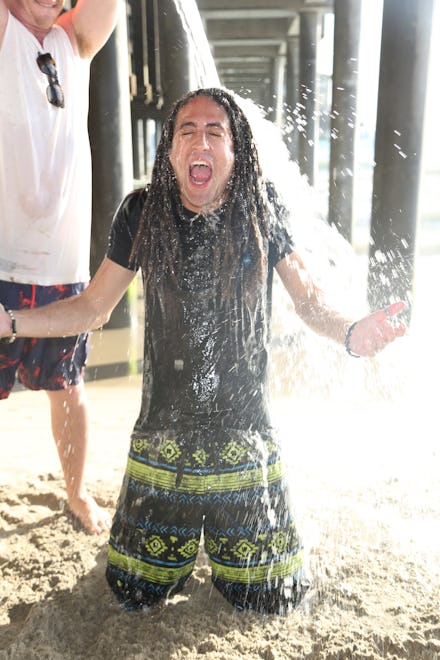Remember the Ice Bucket Challenge? Scientists Say It Worked

A year after the Ice Bucket Challenge went viral, scientists are crediting the viral campaign for providing much-needed research funding into amyotrophic lateral sclerosis (aka Lou Gehrig's disease), the mysterious and usually fatal neurological degenerative condition that inspired it.
Scientists informed the Washington Post that some of the $220 million raised globally from the challenge, organized by the national nonprofit ALS Association, has already gone to good use.
In a Johns Hopkins study funded in part by Ice Bucket Challenge money, doctors experimented with a synthetic version of TDP-43, a protein often found outside the nuclei of brain cells in people with ALS. They found that by injecting the mimicked protein back into mice cells, they were able to reverse the kind of cellular damage seen in ALS patients.
"Without it, we wouldn't have been able to come out with the studies as quickly as we did," Johns Hopkins researcher Philip Wong told the Washington Post. "The funding from the ice bucket is just a component of the whole — in part, it facilitated our effort ... The money came at a critical time when we needed it."
The scientists still have to examine whether or not the treatment can be used as a therapeutic tool, but the study is a breakthrough in a field long riddled with challenges. The American Cancer Society's Dr. Otis Brawley wrote in 2010, "Ten percent of cases that occur are familial or inherited. The cause is unknown in 90 percent ... Riluzole is the only drug that has impact on survival. It does slow ALS progression but only marginally."
The Ice Bucket Challenge asked people to tape themselves dumping a bucket of ice water on their own head to promote awareness of ALS. Celebrities from Benedict Cumberbatch to Oprah Winfrey participated.
The 2014 challenge ultimately raised an estimated $220 million globally, according to the Washington Business Journal. The ALS Association says just 30,000 Americans have the condition at any one time. Coupled with the relative expense and difficulty of studying ALS, that means research geared at effective treatment is still in its infancy.
According to CNN Money, the ALS Association reported funds from the challenge were primarily going towards research into "gene discovery, disease model development, identification of biomarkers, clinical trials, and drug development."
The challenge was not without a fair number of detractors. At Rappler, entrepreneur Jonathan Yabut opined the thousands of videos of people dumping ice water on themselves as a form of "selfish selfie" and a vehicle for digital self-promotion. Time's Sarah Miller wrote she "[shuddered] to think about what we look like dumping freezing cold water over our heads while so much of the world at this time is plunged into acute suffering over which they have no control."
In the end, it looks like the money was well spent. With much of the funding still waiting to be dispersed, the medical research community may have some walking-around money for years to come.
h/t Washington Post